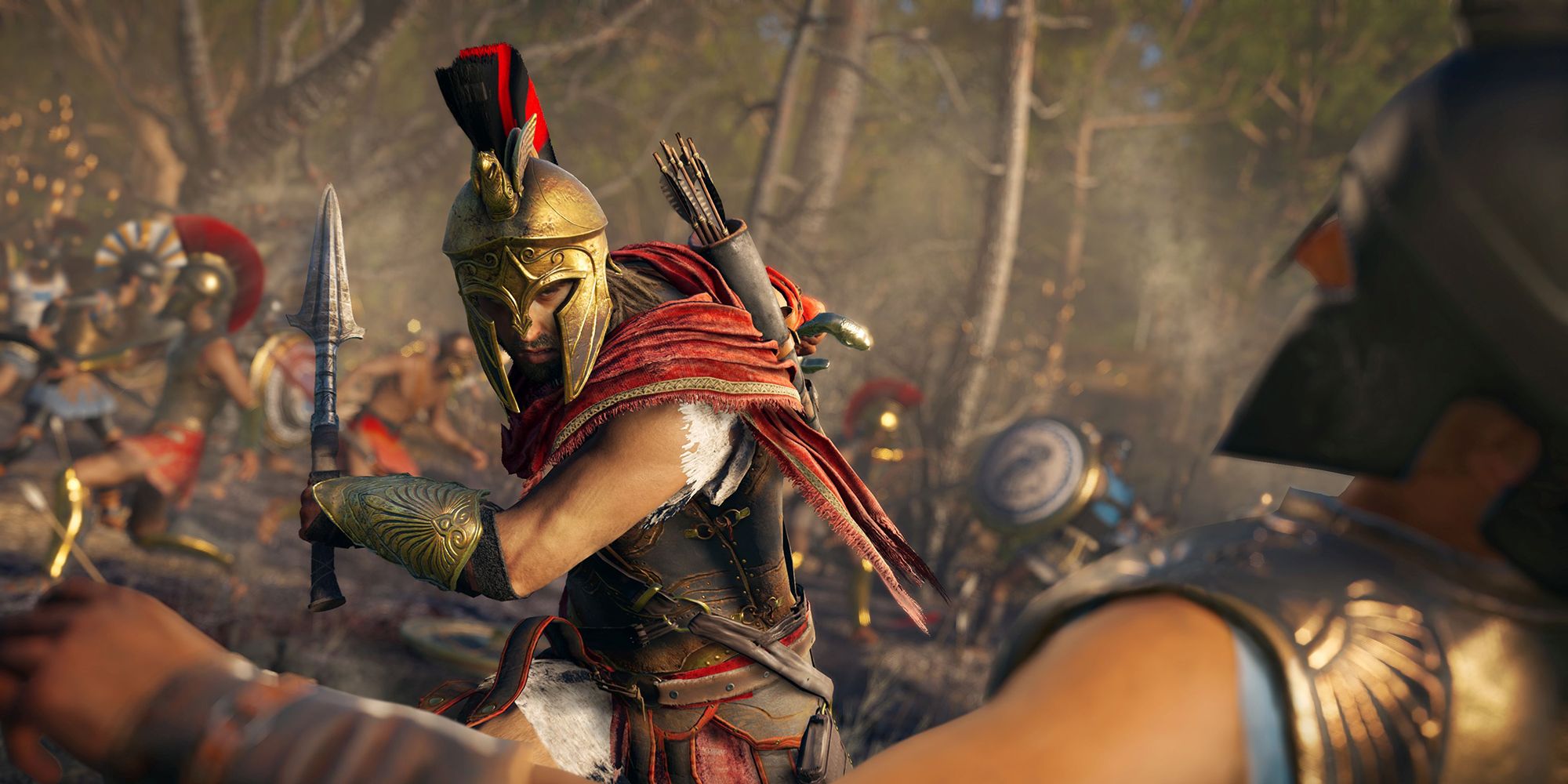
Assassin's Creed Odyssey does things a little bit differently from the games in the series that have come before it: it has more than one ending. Rather than a relatively tight story focused around central assassinations, the title has doubled down on the open world elements of the series, pushing the template formed by Assassin's Creed Origins to its limit and providing a more sprawling experience.
It's not just the gameplay that has been varied from previous iterations, however. The title also has multiple endings, meaning that - depending on what choices the player makes over the course of the game - they could have a different ending to that of another player. On top of this, the title's three core storylines all have their own separate ending points, meaning that in reality each playthrough has three endings to achieve. It makes it a great game, but one players may need to plan for to reach all end points.
Related: Assassin's Creed Odyssey Beginners Gameplay Tips
Given the size of Assassin's Creed Odyssey, some players may want some hints on how best to reach these different finales. To help with this, read on to find out about the nine multiple endings to the personal Odyssey of the misthios, as well as how to reach those end points for the other two story strands. As expected, major spoilers can be found ahead.
Endings To Assassin's Creed Odyssey
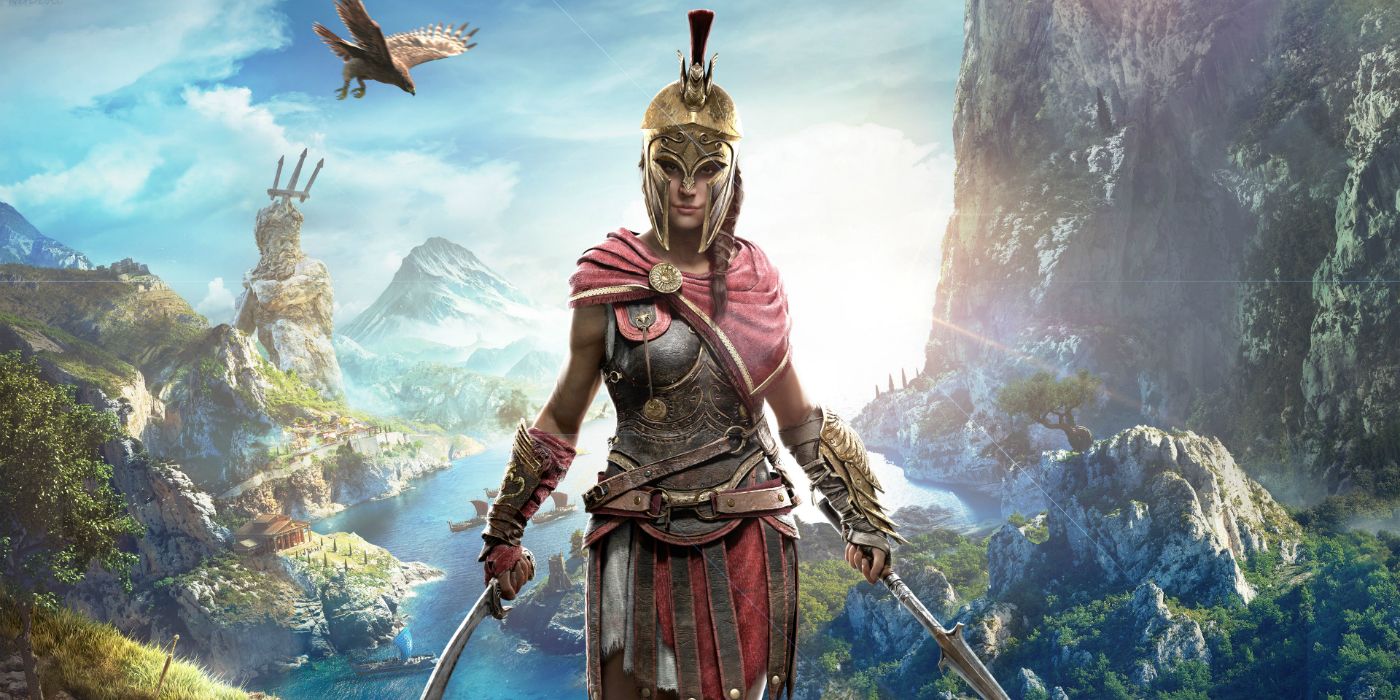
The Odyssey covers what is effectively the main personal plot of Assassin's Creed Odyssey. Whether the player chooses Kassandra or Alexios as their hero, the core plot remains the same: find out what happened to your family, and attempt some kind of reunion.
The best ending for this arc sees the player keeping their entirely family alive, saving their sibling Deimos from the whisperings of the evil Cult of Kosmos and sparing the lives of some of their more rambunctious family members. How to achieve the perfect end to this story has already been covered, so click through to find out how to save the entire family and get the best ending.
There are some other endings available, though. If having the picture perfect finale doesn't fit with a player's attempt to build their own Greek myth, here are all nine of the options available:
Save Everyone: bring back Deimos from the Cult of Kosmos, spare Nikolaos, spare Stentor, and keep Myrrine alive.
The misthios, Myrrine, Deimos, and Nikolaos are alive: kill Stentor when given the chance to fight him. Spare Nikolaos, keep Myrrine alive, and bring Deimos back from the Cult of Kosmos.
The misthios, Myrrine, Stentor, and Nikolaos are alive: do not save Deimos from the Cult of Kosmos, and instead kill them. Spare Nikolaos, save Myrrine, and change the mind of Deimos to take her back from the Cult of Kosmos.
The misthios, Myrrine, and Nikolaos are alive: do not save Deimos from the Cult of Kosmos, and kill Stentor when given the chance. Spare Nikolaos when confronting him, and save Myrrine.
The misthios, Myrrine, and Deimos are alive: kill Nikolaos when confronting him, and kill Stentor when given the chance. Save Myrrine, and save Deimos from the Cult of Kosmos.
The misthios, Nikolaos, and Stentor are alive: do not save Myrrine, and kill Deimos when unable to change her mind from the Cult of Kosmos. Spare Nikolaos when confronting him, and do not fight Stentor.
The misthios and Myrrine are alive: kill Nikolaos when confronting him, do not save Myrrine, kill Deimos after being unable to bring her back from the Cult, kill Stentor when given the opportunity. Save Myrrine.
The misthios and Nikolaos are alive: spare do not save Myrrine, kill Stentor when given the chance, fail to bring Deimos back from the Cult and instead kill them. Spare Nikolaos when confronting him.
Just the misthios survives: kill Nikolaos, Stentor, and Deimos. Do not save Myrrine.
Depending on the ending that the player receives based on their decisions, they will then be able to get a special cut scene that shows what remains of the family. Getting the best ending here will give players a nice sense of togetherness, with all of the family getting together for dinner together. An added bonus is then allowing the player to use any of the family as a lieutenant on their ship, with plenty of buffs between them.
Assassin's Creed Odyssey The Cult of Kosmos Ending
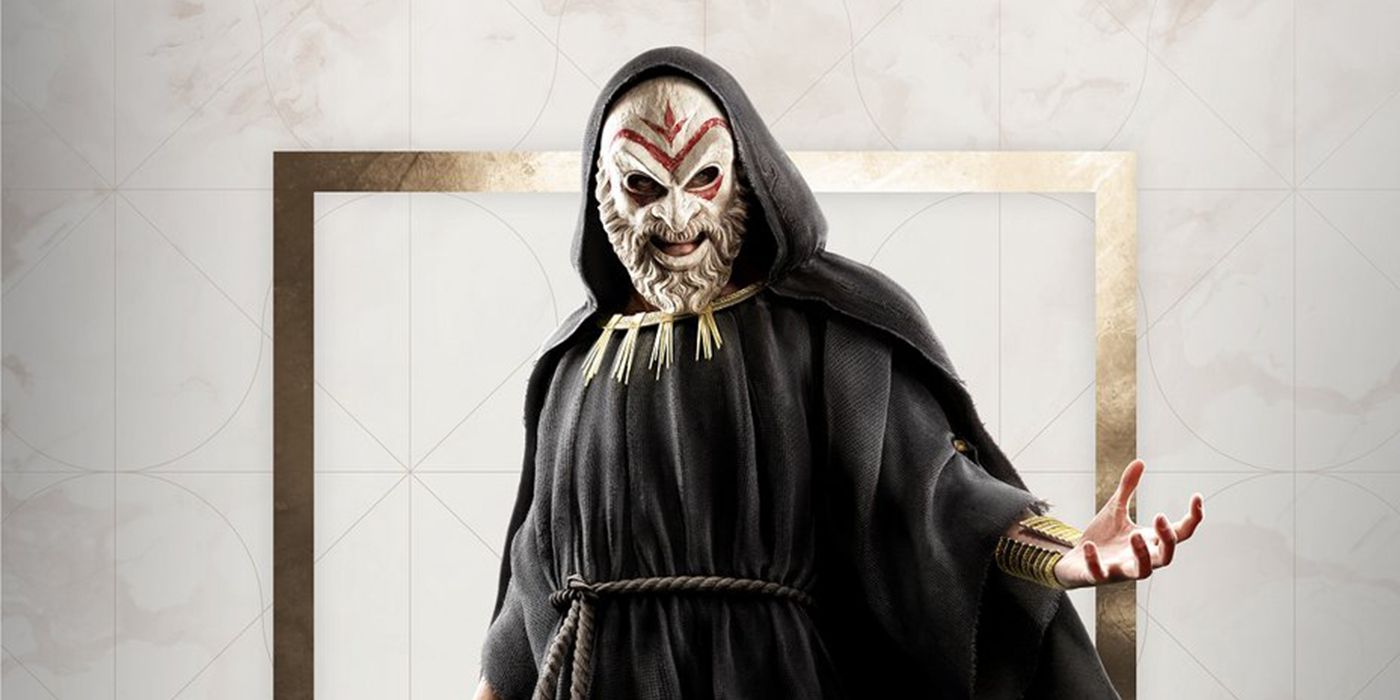
Although The Odyssey revolves around the core plot of the family of the misthios, that plot is also intrinsically linked to the Cult of Kosmos. The cult, a shadowy organization that has been undermining Greece behind the scenes, had a major part to play in the history of the player and the breakdown of their family, and as such seeking answers about the family will inevitably lead the player up against the cult.
There's one handy solution to this problem, though: kill all of them. Tracking down and destroying the Cult of Kosmos is perhaps the most rewarding part of the game, with each cultist revealing a clue to find another member of the group. The plot of The Odyssey will mean the player has to assassinate certain members of the cult, but hunting the rest of them is a voluntary endeavor.
Although there are a couple of members of the cult that can be spared, for the most part it's bloody work, including taking part in Assassin's Creed Odyssey's Conquest Battles. Once all of the cult have been defeated, though, the player will be able to uncover the surprising leader of the cult and get a little cut scene that ties together Assassin's Creed Odyssey with the larger Assassin's Creed universe - sort of. It's a fitting reward to destroying the Cult of Kosmos, giving a little bit of context to a game that at times feels very different from its predecessors.
Page 2 of 2: Assassin's Creed Odyssey's Between Two Worlds Ending
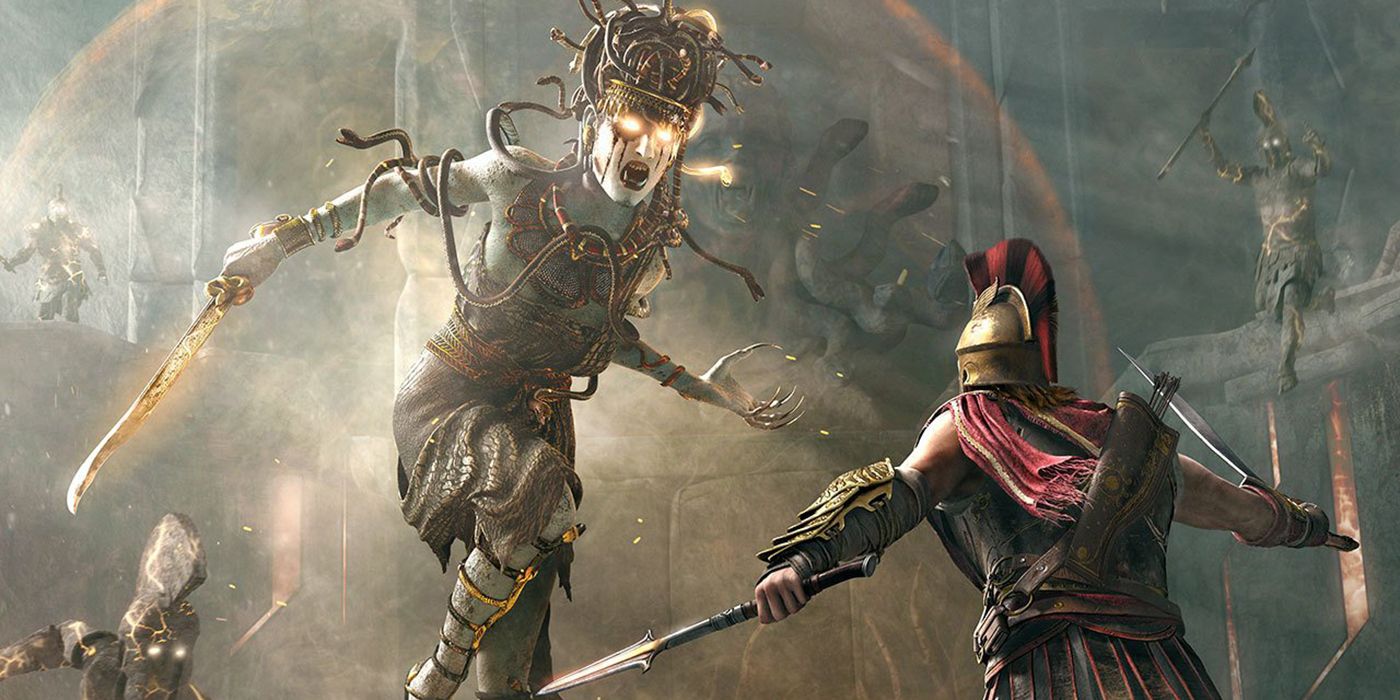
Assassin's Creed Odyssey Between Two Worlds Ending
The reasons why the Cult of Kosmos has been involved in the life of the misthios is tied up in prophecy and legacy, and this is where the Between Two Worlds storyline sits as well. During the game, the player is given an explanation of their history and their family roots, and eventually this leads them deep into the realm of myth and legend, all tied up in the history of the originator race known as the Isu.
Some answers are given, but more than any other storyline in Assassin's Creed Odyssey this one requires a serious amount of effort. To reach this ending, the player will need to defeat four creatures of myth: the Minotaur, the Cyclops, the Sphinx, and Medusa. Each of these has a lengthy side-quest attached, and although none of those quests are all that tricky, going on to actually beat these monsters isn't exactly an easy feat.
The Sphinx is perhaps the easiest of the four to take on, and that's because the player simply needs to solve riddles posed by the creature. Players will be given a random selection of riddles after following the Lore of the Sphinx quest, and here are all the possibilities.
What is large, yet never grows; has roots that cannot be seen; and is taller than trees? A mountain.
Never resting, never still; moving silently from hill to hill; it does not walk, run, or trot; all is cool where it is not. The sun.
What can bring back the dead, make you cry, make you laugh, make you young, is born in an instant, yet lasts a lifetime? Memories.
Some try to hide, some try to cheat; but time will show, we always will meet. Try as you might to guess my name; I promise I’ll know when I do claim. Death.
I’m alive, but without breath; I’m as cold in life as in death; I’m never thirsty, though I always drink. A fish.
What can run, but never walks; has a mouth but never talks; has a head, but never weeps; has a bed, but never sleeps? A river.
What is always old and sometimes new; never sad, sometimes blue; never empty, but sometimes full; never pushes, always pulls? The moon.
At night they come without being fetched, and by day they are lost without being stolen. Stars.
This thing all things devour, birds, beasts, trees, flowers; it gnaws iron, bites steel; grinds hard stones to meal; slays kings, ruins towns; and beats high mountains down. Time.
As small as your thumb, I am light in the air. You may hear me before you see me, but trust that I’m there. A hummingbird.
I create my lair with earthen string, and dispatch my prey with a biting sting. A spider.
In spring I am gay in handsome array; in summer more clothing I wear; when colder it grows, I fling off my clothes; and in winter quite naked appear. A tree.
After giving the correct answers, the player then just has to choose the corresponding symbols for the questions asked on the pillars around the Sphinx. With that, it will then grant the player a piece of Eden.
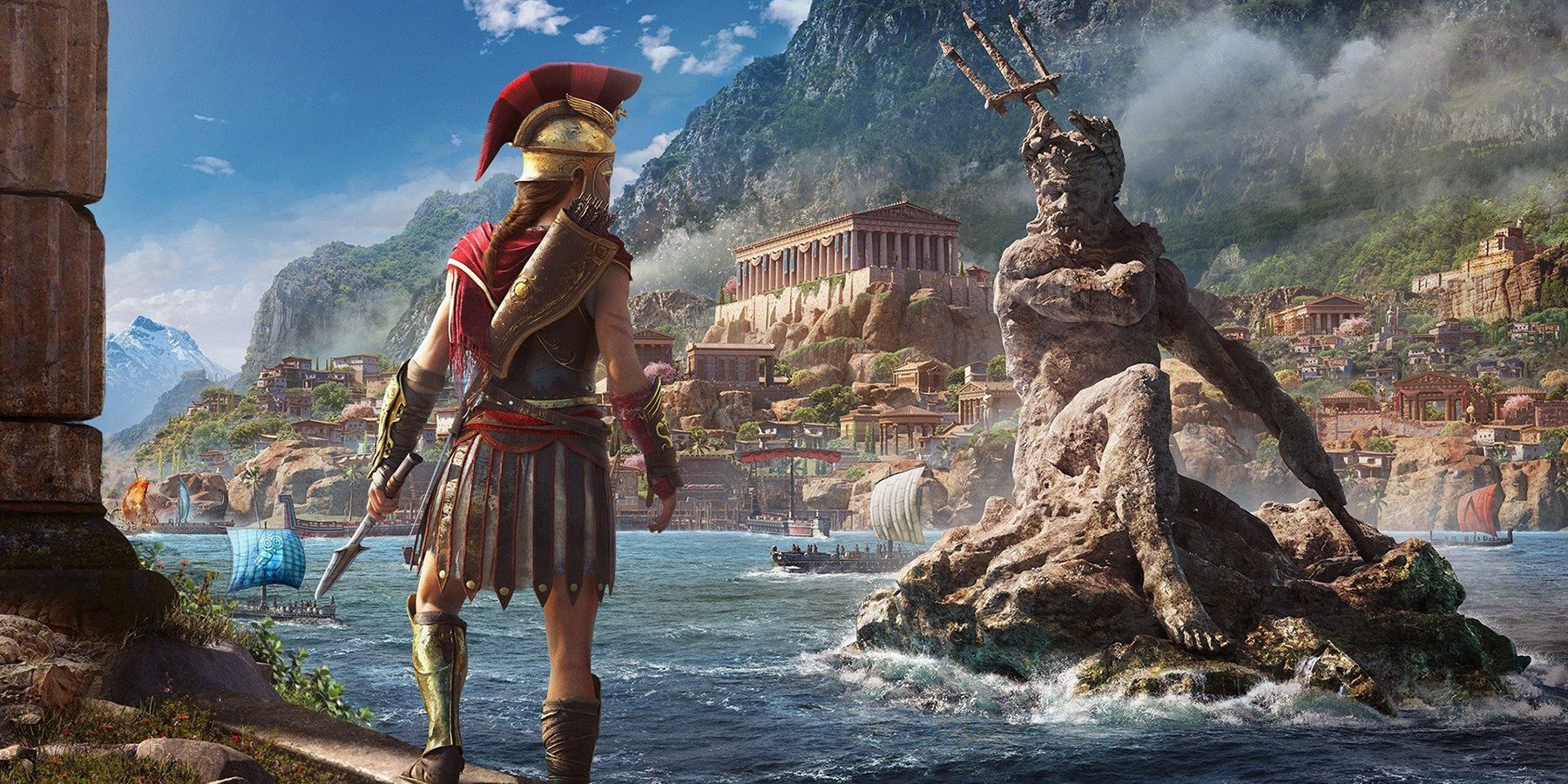
The Minotaur is much more straightforward - by following the Of Minotaurs and Men quest, enter the labyrinth found on Messara and make your way through it, until you reach the arena in the center. This is where the Minotaur can be found, and it's a boss battle that can be quite intense. Because of the sheer amount of damage the Minotaur does with its heavy axe swings, it's best to keep a bit of distance, and attacking when the opportunity strikes (ideally with arrows if the player's hunter perks are leveled up). Survive a mid-fight switch up where the arena becomes much smaller, and the Minotaur will be defeated.
The next fight is somewhat similar to that of the Minotaur, as the Cyclops is once again a relatively slow, heavy-hitting foe. Found on The Forgotten Isle, the fight is available by following the otherwise humorous A God Among Men quest line. During the fight itself, watch out for falling debris, particularly in the second half of the battle, and aim for the eye as an obvious weak spot. All in all, the Cyclops shouldn't cause too much trouble.
Medusa, meanwhile, is a little more complicated. Found via the Romancing the Stone Garden side quest on Lesbos, it's effectively the most difficult boss battle of the game, and so is perhaps worth leaving until last as a final challenge after getting those Assassin's Creed Odyssey legendary armor sets ready. This is with good reason as well - alongside Medusa's vision acting as a ranged attack that can turn the player to stone, the Gorgon also unleashes vicious electric attacks that deal a ton of damage. Keep moving, hide behind pillars when the petrifying gaze is unleashed, and be patient, whittling down Medusa's health whenever possible.
Once all the creatures have been defeated, their artefacts can be returned to Pythagoras to unlock a much bigger explanation of the role of the Isu, before flashing forward to a modern day section. It's a much-needed link back to the larger Assassin's Creed story, bringing Assassin's Creed Odyssey together with those games that came before it. This also provides something of a moment of closure on what is otherwise a varied, lengthy gaming experience.
More: Every Assassin's Creed Game Ranked
from ScreenRant - Feed https://ift.tt/2q7yWCC



0 Comments